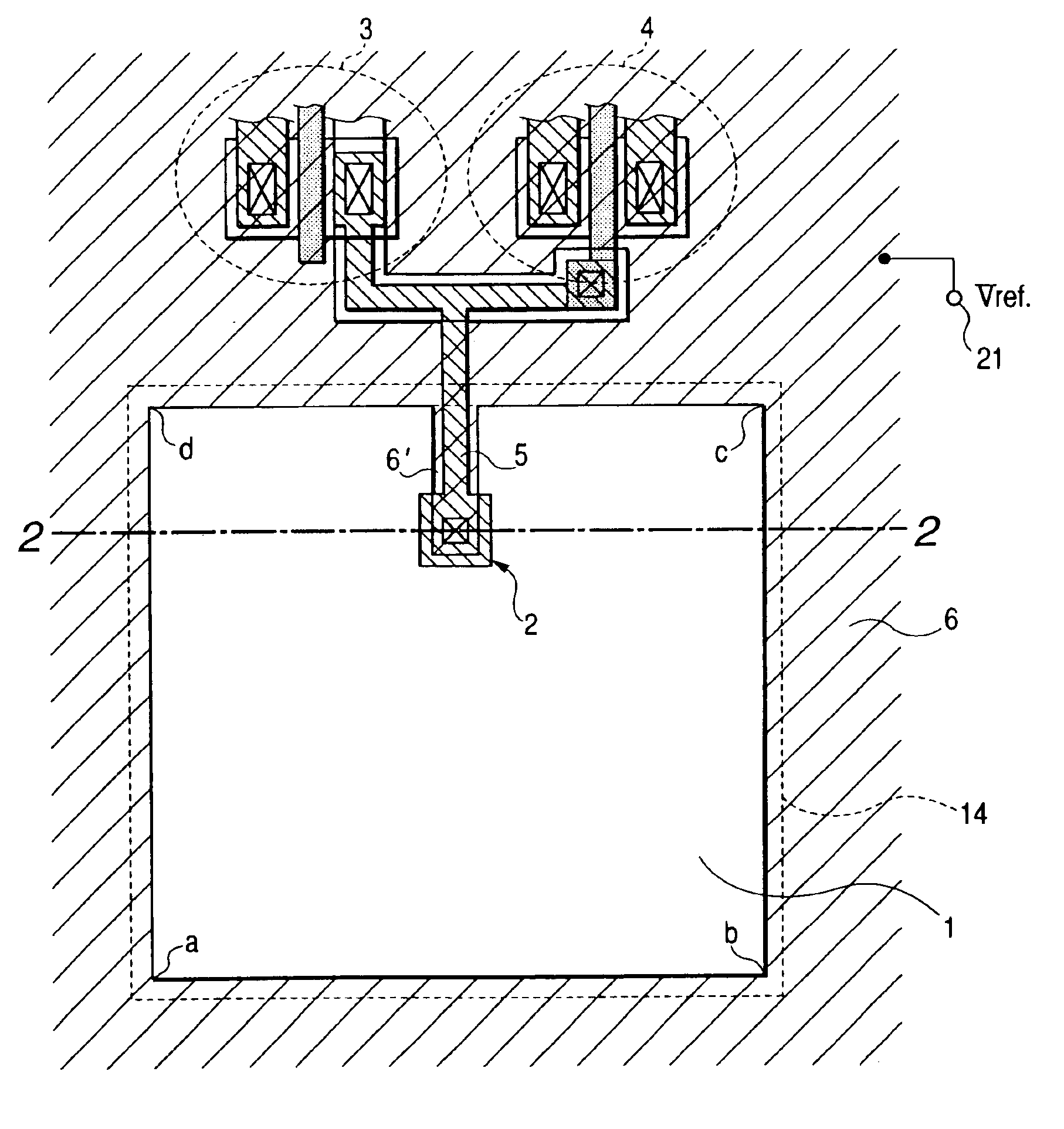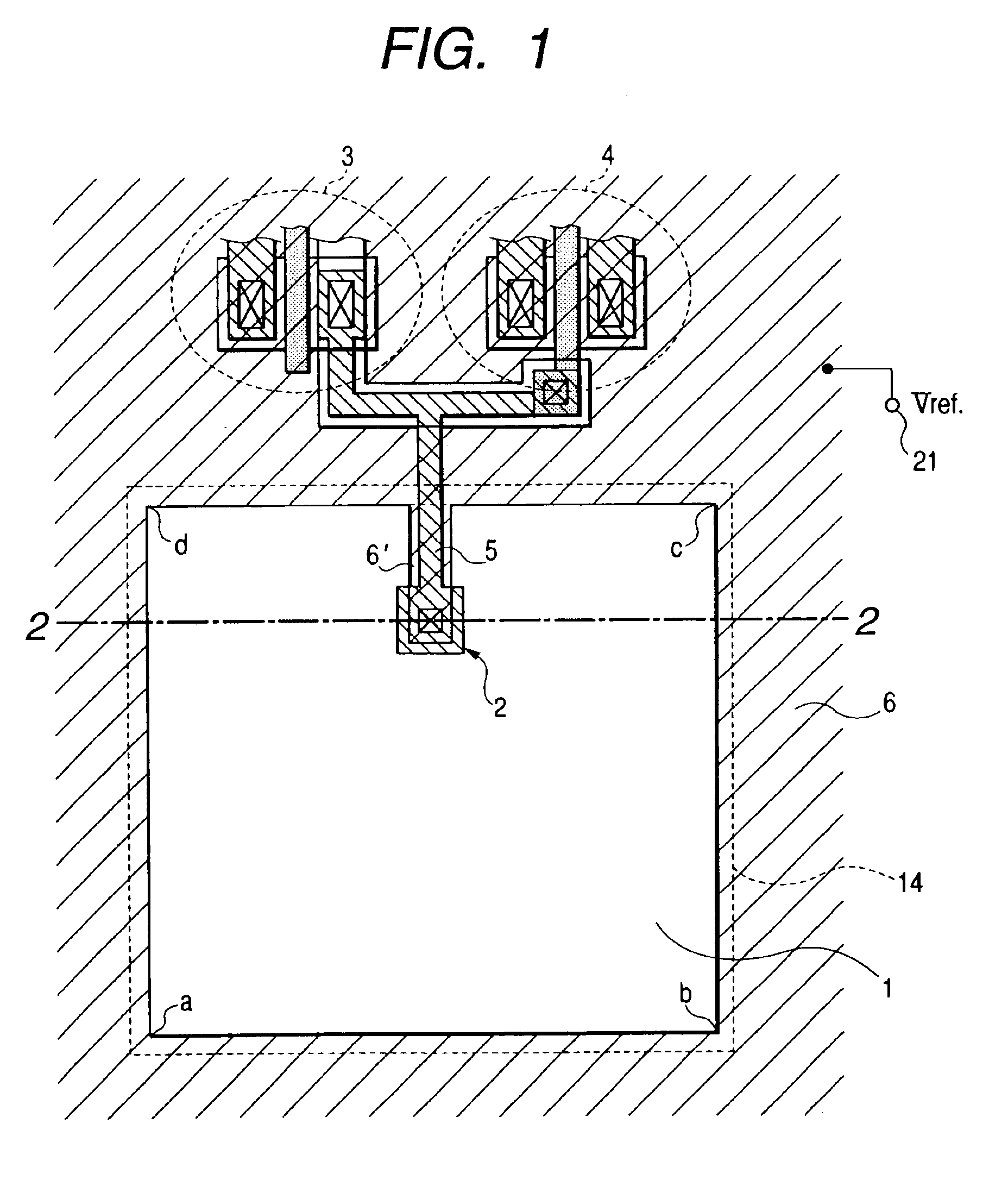Photoelectric conversion device, and image sensor and image input system making use of the same
a conversion device and photoelectric technology, applied in the direction of diodes, semiconductor devices, radio frequency controlled devices, etc., can solve the problems of reducing the capacitance at the photoelectric conversion area, reducing the image quality, and increasing the reset noise produced when a photodetector is reset, so as to achieve the effect of large capacitan
- Summary
- Abstract
- Description
- Claims
- Application Information
AI Technical Summary
Benefits of technology
Problems solved by technology
Method used
Image
Examples
embodiment 1
(Embodiment 1)
FIG. 1 illustrates a planar structure of a photodetector as a photoelectric conversion device according to the present invention. FIG. 2 illustrates a cross-sectional structure along the line 2-2 in FIG.
The photoelectric conversion device according to the present embodiment comprises:
an n−-type region 10 as a first-conductivity type first semiconductor region, located in a pixel region (a pixel region opening; hereinafter merely “opening”) 1;
a p+-type region 11 as a second-conductivity type second semiconductor region, provided in the first semiconductor region 10, where in a floating state, the first semiconductor region 10 may accumulate photoelectric carriers therein;
a wiring 5 for electrically connecting the second semiconductor region 11 to circuit elements 3 and 4 located outside the pixel region 1; and
a conductor 6′ provided on the wiring 5 located inside the pixel region, via an insulator 7 and kept at a stated potential.
The conductor 6′ stands extended into th...
PUM
 Login to View More
Login to View More Abstract
Description
Claims
Application Information
 Login to View More
Login to View More - R&D
- Intellectual Property
- Life Sciences
- Materials
- Tech Scout
- Unparalleled Data Quality
- Higher Quality Content
- 60% Fewer Hallucinations
Browse by: Latest US Patents, China's latest patents, Technical Efficacy Thesaurus, Application Domain, Technology Topic, Popular Technical Reports.
© 2025 PatSnap. All rights reserved.Legal|Privacy policy|Modern Slavery Act Transparency Statement|Sitemap|About US| Contact US: help@patsnap.com



